Jump to:
Ready to make your own safe place for insects, a.k.a. a bug hotel?
Insects play an important role in mankind and the environment. Apart from pollinating crops we rely on as food, they provide valuable services in many ways.
For all these reasons, agriculturists have created a creative and natural way to support these little creatures. It’s simple, effective, and can also be a stunning addition to gardens: a bug hotel.
Bugs have ecological importance, such as aerating the soil and controlling other insects and plant/garden pests. Insects also have economic importance; they provide useful substances like:
- Honey
- Wax
- Silk
If you’re interested in making your own safe place for beneficial insects, keep on reading. We’ll share with you a quick guide to bug hotels, including some necessary information and tips!
Key takeaways:
- The beauty of making a simple bug hotel is that almost everything can be made of natural materials (or even recycled materials).
- Bug hotels can be made from blocks of wood, leaf litter, dry sticks, and even a cardboard tube.
- Some insects can be a real headache, and most are even considered to be pests.
- Yet, some of these tiny creatures are, in fact, important for a number of reasons.
- Insects can be the sole food source for amphibians, reptiles, birds, and mammals. This makes their roles in food chains and food webs very important.
- Did you know that food webs could collapse if the population of these beneficial insects decline?

Importance of Insects
Insects may be small in size, but their ecological role and influence on agriculture and natural resources are immense. They’re the largest and most diverse group of organisms on Earth.
Thus, when it comes to creating a biological foundation, insects can support all terrestrial ecosystems. So little creatures; big responsibilities.
Their economic and ecological importance (and other significance) includes:
- Cycling nutrients
- Pollinating plants
- Dispersing seeds
- Maintaining soil structure and fertility
- Controlling populations of other organisms
- Providing a major food source for taxa
- Produce useful substances (e.g. honey and wax from honeybees, silk from silkworms, shellac for pieces of wood)
- As food and medicine sources in some parts of the world like South America to Japan
Yet, like any other wildlife, insects need safe spaces to shelter, seek refuge from predators, and raise their young. And as mentioned earlier, there’s an easy way to offer them protection and a safe hideaway:
Why not try creating a wildlife hotel, a.k.a. DIY bug hotels in your own garden space or garden centre?

What Is a Bug Hotel?
A bug hotel is a clever man-made structure placed in gardens, providing a place of refuge and safety for beneficial insects. They’re sometimes called insect hotels or insect houses.
Bug hotels provide habitats for beneficial insects, particularly in winter. But they also make a great statement piece for the average garden.
Moreover, DIY bug hotels could shelter anything. From hedgehogs to toads, solitary bees to bumblebees, and ladybirds to woodlice, to name a few. But, of course, this depends on their size.

The amazing benefits of bug hotels
Bug hotels benefit lots of different types of “minibeasts”. This includes ladybirds, bees, spiders, including even the majestic stag beetle.
Providing them with cosy shelters means they can have a safe place to shelter during the colder months. What’s more, they can lay their eggs, raise their young, and seek refuge from predators.
A safer environment for these crawly creatures also means their populations will continue to increase. This benefits the food chain and food web in their ecosystems.
What’s more, when they wake up next spring, these beneficial garden creatures can sweep your plants clean of aphids and mites. What a deal!
Bug hotels also offer children a handful of learning opportunities. Projects like DIY bug hotels are great for youngsters to be involved in and learn more about their natural environment.
If you’re an organic gardener or nature and garden lover, you can expose them to life-changing wildlife experiences. Nothing beats learning through first-hand experiences.
Building a bug hotel is a great activity for the entire family. Plus, you probably won’t need to buy anything, as the required building materials are either lying around in your garden or can be found in wooded areas.

Building a Simple Bug Hotel
You can build your own version of insect homes at any time of the year. But most beneficial insects start looking for safe spaces in autumn in preparation for hibernation.
Knowing exactly what bugs you want to attract in your garden means you can tailor the hotel for them specifically. Thinking about whether these insects feed off smaller bugs or where they need to lay their larvae will also help with these decisions.
It’ll also be best to create bug homes made from all kinds of natural or recycled materials. That way, you can help preserve our ecosystem while saving our environment.
A few more tips for building cleverer bug hotels
Choose a sheltered area in your garden, away from the worst of the weather. This can be a spot close to a wall or hedge, which provides protection or a barrier from the elements.
Bug hotels placed in damp, dark conditions can attract different bugs. Some prefer the sun, so know what kind of environment your insects are fond of.
Make sure the floor surface is flat, as well. Depending on the size, bug hotels can weigh heavier once entirely constructed. Hence, building them on a steady and flat surface can ensure the structure will stay intact.

Lastly, use a wide range of recycled materials. It’s always best to use natural building materials, creating nooks and crannies for various insects to scuttle into.
This can be broken plant pots (e.g. broken non-plastic plant pots like ceramics), bits of wood (or boards of wood), and bamboo sticks. Here are a few resources you might find useful:
- Wooden pallets – You can pile these on top of each other, creating a tiered effect.
- Deadwood, logs, branches, and twigs – These building materials are perfect for poking into small areas. Children can lift the logs and get a closer look at woodlice and centipedes.
- A hollow plant or hollow stems and pipes, bamboo canes – They’re ideal for creating a nesting area.
- Dry leaves or loose bark (bits of bark) can add floor area in each section, making it ideal to house spiders, beetles, and hibernating ladybirds.
- Waterproof signs/pictures (e.g. a bee hotel image) – these can help children identify the insects they may find.
- Magnifying glasses – these tools are optional but functional. They’re perfect for taking a closer look at the insects.
Now, are you ready to make your own bug hotel? Here are five easy tips to follow.

How To Make A Bug Hotel In 5 Easy Steps
Step 1: Collect your materials
Before you make a start, begin collecting the materials you would like to use. The house doesn’t have to be huge, but the more sections you add will increase the number of insects you might have pay.
We recommended opting for different natural materials. This includes dry leaves, twigs, bark, pallets, old terracotta pots, hollow stems, and of course, plenty of soil.
Deadwood and loose bark are perfect for housing beetles, spiders, and woodlice. In contrast, larger holes with stone and tiles can provide cool, damp conditions for frogs.
Dry leaves are perfect for ladybirds, while corrugated cardboard can shelter lacewings. If possible, you can even put a hedgehog box into the base of the hotel.
Top tip: Add dry leaves to mimic a natural forest floor, which many bugs like!
Step 2: Start with the base
Once you have decided on the right location for the bug hotel, it’s time to start building.
For the base, lay bricks on the ground to create a sturdy foundation. Remember to leave a few gaps so that insects can wriggle their way through.
Placing dry leaves on the floor will help to mimic a natural forest, inviting even more crawly creatures to visit. Then, start to put more bricks and palettes (or cedar boards) to add height to the house.
Insects may use the section that best suits them for laying eggs and hibernation.
Top tip: Choose somewhere close to wildflowers if you can.

Step 3: Fill your bug hotel
Take the smaller materials you gathered together. Then begin to fill your bug hotel with dead wood, tubes, stones and tiles.
That way, wildlife can fit into the small spaces.
Top tip: Fill different areas with various materials to attract all kinds of insects. This really is the fun part as you can get creative with designing space bugs will love.
Step 4: Place the roof
Once your bug hotel is jam-packed with inviting materials and textures, it’s time to close it up and await the new creatures. The roof can help the structure not to topple over and keep it dry during wet weather.
You can use old roof tiles or some old planks covered with roofing felt. Do this step when you think you’ve gone high enough, or you already achieved the ideal height for the bughouse.
Top tip: It’s recommended you surround your hotel with nectar-rich flowers as well. This is to attract butterflies, bees and other pollinating insects.

Step 5: You now have your own bug hotel
It may take a while for insects to check in to your hotel, but when they eventually do, it certainly will be a sight to enjoy. Bug hotels tend to be more popular during the warmer months and at night time, so don’t be disheartened if you don’t always spot them.
Check out the video below to see this process in action:
FAQs
How do I attract bugs to my bug hotel?
Most bugs are fond of damp environments surrounded by decayed plant materials. Therefore, incorporating decaying plants in the material and placing the hotel base in damp areas will do the trick.
This will attract woodlice, including centipedes and millipedes.
Note: Insects love warm, dry places, too.
Where is the best place to put a bug hotel?
If you're attracting bees, keep in mind that they like to be warm. So placing the hotel on a south-facing wall is the key.
It should be facing the sunlight or light shade, preferably 1.5m off the ground.
How do you make a minibeast hotel?
There are different ways to create insect homes. The process depends on the building materials you plan to use, of course.
If you're doing this for the first time, our guide can come in handy!


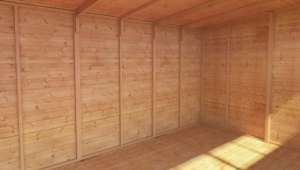



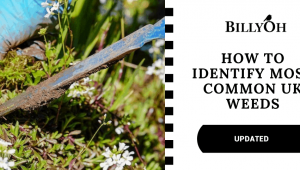

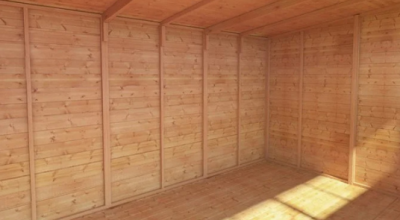
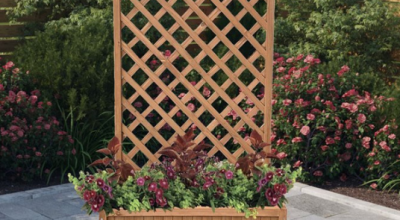
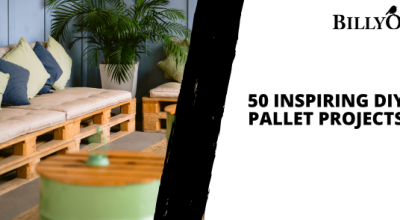

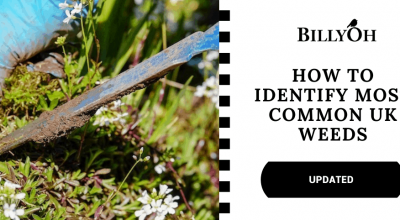
What do you think ?